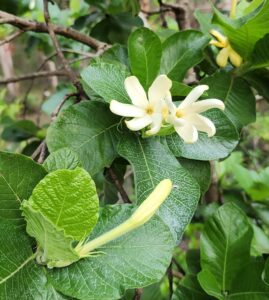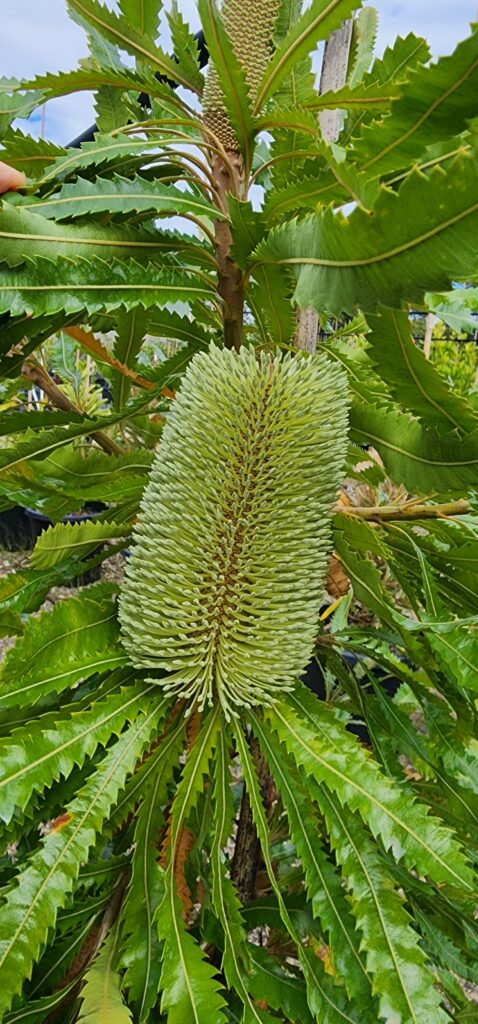Landscape design and landscaping a garden or public space in the Fraser Coast Region (such as Hervey Bay) is as simple as following these basic steps. This article will start you on the path to the perfect landscape.
Plant Connections Nursery has consistently been a supplier of plant stock to landscapers and developers in the Fraser Coast region over the past few years. Selection of plants and guiding appropriate plant species has resulted in successful designs that withstand the wet seasonal months and extended dry periods.
By embracing suitable native and non-native plant species, it is possible to create a highly attractive and functional landscapes for both the commercial sites and home residential gardens.
Step 1 – Planning the landscape (garden design)
First point of advice is to ‘embrace your local climate’. Hervey Bay is referred to as a subtropical climate which typically means a humid hot and wet summer-autumn along with a short dry winter-spring.
Draw your property – the fence, the house, any structures like sheds, chicken houses and pathways. Mark in services such as water, electricity, gas, internet optic fibre, etc. Draw a north arrow as a reference for shade and sun movement. Draw in any existing trees, shrubs and garden beds.
Mark on your drawing where water flows during heavy downpours as this may impact on your garden design.
Aim to place things that need more care and attention closer to the house to help you save time when walking around and doing garden maintenance. Generally, herb gardens and vegetable patches should be located relatively close to the house because they tend to require more TLC. Other things such as fruiting trees can be further away as they require less care.
Areas further away from the house and water taps may require an irrigation system to be installed.
Step 2 – Selection of plants
Fraser Coast region boasts many stunning native plants that are worth growing in gardens and on commercial landscape projects. Check out organisations such as landcare to source tubestock and other specialist natives.
When selecting native plants, remember that your soil and your site conditions can affect the growth of plants.
A good starting reference for native species is available here
Another reference list for species is available here.
Additional natives that are not listed on the PDF but should be:
- Larsenaikia ochreata – Wenlok native gardenia
- Brachychiton compactus – Whitsunday bottle tree

Aim to plant species that like similar conditions together – harmony planting. This means identify plants that like the same soil moisture level and plant them together (use an irrigation system); same pH soil level, plant them together; same fertiliser regime, plant them together.
Create a landscape that not only you enjoy but also encourages wildlife – birds, bees, butterflies, gliders, reptiles, etc. Invest in mulch as that helps conserve soil moisture and provides habitat for lizards. Consider building a frog pond, bird nesting boxes, bat boxes, native beehive, etc.
Grow a range of plants from groundcovers, shrubs and shade trees depending on your land area and design objective. These can dramatically assist in creating a wildlife friendly backyard and corridor.
Key tips about Waterwise Gardening
- Watering time – early morning is best for your fruit, vegies and most ornamental plants. However, watering in the evening tends to be best if you are growing plants from tropical zones – the tropical plants. Avoid watering in the middle of day or during hot windy periods – wait till the winds subside and heat reduces.
- A decent watering that encourages deep roots is far better than a light sprinkling. Standing and holding a hose may be good personal therapy but it may not be best for the plants that need the water.
- Watch the plants – water when THEY need it. Plants will show symptoms when they are too wet or too dry. Learn how to read your plants when they tell you they need water.
- Grow trees that create shade. A shady garden is cooler and hence needs less watering.
- Watch the weather – don’t water when it is raining or about to rain.
- Increase mowing height and mow less frequently. Cutting low (scalping) can increase the stress on lawn and result in death. Increasing mow height can save you water as the plants are more resilient to withstand drought conditions.
- Mulch is your friend. Organic mulch enriches the soil nutrients, stimulates beneficial soil microbes and reduces surface water evaporation.
For more information about waterwise gardening – PDF
Step 3 – Installation
Make sure you have all the items and plants needed before you start.
Remove any weeds and unwanted vegetation.
Fix or install drainage and/or irrigation works. Build structures if desired, such as retainer walls, pergolas, stairways, etc. This may involve employing a professional landscaper or irrigation specialist.
Prepare the soil with organic matter and nutrients (fertiliser). Buy in extra soil if you need more ‘good soil’. Mulch the garden beds either before plants are dug in, or afterwards.
Dig holes and plant the new specimens.
Water new plants in well. Consider applying a sea-weed solution at this time to assist with establishment.
Staking plants should only be needed if the sight is windy or the new stock is too weak to stand up by itself.
If you are not skilled to install the landscape project, hire qualified landscapers with the appropriate licence and horticultural qualification.
Here at Plant Connections, we can help you select the right plant stock for your landscape project. Some we grow here and others we can get in for you, depending on availability.
Contact us if you are seeking these plants for your landscape project.
Send us your plant list so we can work on a quote for you.

